Chest pain: A heart attack or something else?
Table of Contents
Overview
Chest pain can be seen in too many different forms, ranging from a sharp stab to a dull ache. Sometimes chest pain feels crushing or burning. In a few cases, the pain referred to the neck, into the jaw, and then spreads to the back or down one or both arms.
Many different problems may cause chest pain. The most life-threatening causes include the heart or lungs. Because chest pain may indicate a serious problem, it is necessary to seek immediate medical help.
What Are the Causes of Chest Pain?
Chest pain is one of the most common reasons that an individual visits the emergency room (ER). Chest pain varies depending on the person. It also varies in the:
- Quality
- Intensity
- Duration
- Location
- It may experience sharp, stabbing pain or a dull ache. It can be a sign of a serious heart-related problem or because of a common cause that is not life-threatening.
Heart problems
Various heart problems may cause pain in the chest.
Heart attack
Chest pain is one of the 5 main symptoms of a heart attack. The others are:
- Pain in the jaw, neck, or back
- Lightheadedness or weakness
- Pain in the arms or shoulders
- Shortness of breath
- Women particularly can also feel sudden tiredness, nausea, or vomiting.
- If a person thinks they are having a heart attack, they should look for emergency medical help.
- The earlier a person may get to ER, the earlier treatment may initiate.
- Getting prompt treatment improves a person’s chances of survival and potentially decreases the severity of the damage to the heart.
Myocarditis
Myocarditis is when the heart becomes inflamed, the outcome in symptoms that are similar to a heart attack, such as:
- Chest pain
- Shortness of breath
- Fast or irregular heartbeat
- Myocarditis generally results from a viral infection.
Angina
Angina goes through a squeezing pain or pressure on the chest. It takes place when enough blood is not getting to the heart. A patient may also experience pain in the:
- Shoulder
- Back
- Neck
- Arms
- Jaw
- Angina can feel like indigestion. It is a main symptom of coronary artery disease.
Aortic aneurism and dissection
Aortic dissection is a tear or detachment of the inner layers of the aorta, the main artery that leads from the heart. This may lead to an increase in blood in the artery.
- An aortic aneurysm makes a reference to an expansion in the aorta.
- These couple of conditions may cause the aorta to rupture or burst.
- Aortic dissection and a severe aortic aneurysm are emergencies and need immediate medical help.
- A stable aortic aneurysm can not need emergency treatment.
Coronary artery dissection
- Coronary artery dissection is when tearing happens in the coronary artery wall.
- If the deepest layer tears, blood may exude through and builds up, causing a bulge.
- It can lead to a heart attack. Sudden intense pain that happens to “tear” across the chest, neck, back, or abdomen may be a symptom of coronary artery dissection.
- This is an infrequent but serious condition.
Pericarditis
Pericarditis is inflammation of the sac near the heart. It can result in the following:
- Severe chest pain behind the breast bone.
- A buildup of fluid around the heart.
- Cardiac tamponade, when fluid bears down on the heart.
- Obstructive shock is when the heart may not fill with blood effectively.
- Pain can be worse when an individual breathes in or is lying down but increase when they sit up or lean forward.
- It is usually a consequence of a viral infection, but there are too many other possible causes.
Mitral valve prolapse
A mitral valve prolapse is when a valve in the heart is not able to close fully. In mild cases, this condition can have no obvious symptoms. If symptoms happen, they involve:
- Rapid heartbeat
- Chest discomfort
- Fatigue
Hypertrophic cardiomyopathy
Hypertrophic cardiomyopathy is when the heart grows too thick because of genetic factors. The thickening of the heart prevents blood from flowing from the heart correctly, causing the muscle to work very hard to pump blood. Symptoms of hypertrophic cardiomyopathy involve:
- Chest pain
- Changes in heart rhythm
- Shortness of breath
- Dizziness
- Lightheadedness
- Fainting
- Swelling in the foot, ankles, legs, and abdomen
- A person who notices this should seek medical advice, as it may worsen over time and lead to other complications, like blood clots and heart failure.
Lung problems
Various lung problems may be the cause of chest pain.
Pulmonary hypertension
Pulmonary hypertension is high blood pressure in the arteries that send the blood to the lungs. In some cases, this can outcome in chest pain. It may occur for different reasons and may result in the following:
- Breathlessness and faintness when exercising.
- Shortness of breath when bending down.
- Fatigue.
- Swelling due to fluid buildup.
- Pulmonary hypertension is not generally immediately life-threatening but requires medical attention.
Pleurisy
Pleurisy is inflammation of the membrane that wraps the lungs. Symptoms involve:
- Chest or shoulder pain
- Pain is getting worse, when a person starts to breathe, cough, sneeze, or move the trunk or chest wall
- Pain can be dull, aching, or “catching”
- Without any kind of treatment, it can lead to life-threatening complications.
Pneumonia
Lung infections like Pneumonia may be the cause of sharp or stabbing chest pain, specifically when breathing deeply or coughing.
Other symptoms of pneumonia involve:
- Fever, sweating, and chills
- Coughing up phlegm, which can be green, yellow, or contain blood
- Shortness of breath
- Bluish tinge to the lips or fingetips
- Rapid, shallow breathing
- Low appetite, low energy, and fatigue
- Nausea and vomiting (in young children)
- Confusion (in older people)
- A person with breathing difficulty requires immediate medical attention, as pneumonia may be life-threatening.
Pulmonary embolism
A pulmonary embolism is when a blood clot gets pinned down in an artery feeding blood to the lungs. Common symptoms include:
- Chest pain, especially when breathing in
- Back pain
- Shortness of breath
- Coughing up blood
- Leg pain or swelling
- Sweating
- Lightheadedness, dizziness, or fainting
- Blue tinge to lips or nails, identify as hypoxia
- Pulmonary embolisms may be life-threatening without urgent treatment.
COVID-19
An individual with COVID-19 can experience respiratory symptoms, pain, or pressure in the chest. A person should look for
- Immediate medical help if they have the:
- Persistent pain or pressure in the chest
- Breathing difficulty
- Blue lips or nails
- New confusion
- Difficulty staying awake.
Tuberculosis
Tuberculosis (TB) is a bacterial infection that usually influences the lungs. It may cause:
- Chest pain
- A bad cough that can produce blood or sputum
- Weight loss
- A fever and night sweats
- In the past time, TB was nearly always fatal. During this time, antibiotics may generally treat it successfully.
Asthma
Asthma is a usual breathing disorder distinguished by inflammation in the airways, which may cause chest pain. Other symptoms
involve:
- Tightness in the chest
- Shortness of breath
- Coughing
- Wheezing.
Collapsed lung
When air builds up in the space between the lungs and ribs, leading to a collapsed lung, also identify as pneumothorax. Some individuals have no symptoms, but the following can happen:
- Chest pain, which can go to the shoulder
- Discomfort when breathing
- Faster breathing rate
- Shortness of breath
- Swelling on one side of the chest
- Decreased breathing sounds
- A punctured lung is the other cause of pneumothorax.
Gastrointestinal and digestive problems
The following conditions affect body part that plays a vital role in digestion. Chest pain may be a symptom.
Pancreatitis
Pancreatitis is an inflammation of the pancreas. Acute pancreatitis generally results from gallstones. Persistent, or long-term pancreatitis stems from genetic features or high alcohol consumption. A person can notice:
- Upper abdominal pain can start suddenly or slowly, be mild or severe, and last several days
- Swollen or tender abdomen
- Nausea and vomiting
- Fever
- Pain that goes up to the back
- If a person notices these symptoms for the first time, they should require medical help at once.
Esophageal spasms
Esophageal contraction chaoses are spasms or contractions in the food pipe. Symptoms involve:
- Chest pain
- Difficulty swallowing
- Regurgitation
- Heartburn
- These disorders may also cause chest pain.
Esophageal hypersensitivity
- In a person with esophageal hypersensitivity, sensations that are not generally painful may cause severe pain.
- Physicians do not know exactly why this takes place, but cells in the gullet can be particularly sensitive to acid.
- Stress can trigger symptoms in individuals who are susceptible.
Esophageal rupture
If the food pipe bursts, this may result in sudden, intense chest pain. An esophageal rupture can take place after a procedure including the esophagus or a traumatic injury. Other possible symptoms involve:
- Retching and vomiting.
- A crackling sound on touching the chest.
- Shortness of breath or rapid breathing.
Peptic ulcers
Peptic ulcers are sores in the stomach lining. They may be the cause of:
- Pain in the abdomen or upper abdomen after eating
- Bloating
- Nausea
- Vomiting, possibly with blood
- They do not normally cause intense pain but may result in recurring discomfort in the chest.
Gastroesophageal reflux disease (GERD)
GERD tends to when the food of the stomach moves back up into the throat. It may lead to:
- Chest pain
- Regurgitation
- Nausea and vomiting
- Difficulty swallowing or pain when swallowing
- A cough, hoarseness, or some other symptoms in the throat
- Over-the-counter antacids may frequently relieve GERD.
Other causes
Here are some other causes of chest pain that might take place.
Panic attack
A panic attack is an unexpected attack of panic or fear. Frequently a person does not know why it happens, but it can be a
symptom of a condition identified as panic disorder. The individual can experience:
- Chest pain
- A rapid heartbeat
- Fear
- Nausea
- Dizziness
- Sweating
- Shaking and trembling
- The symptoms may look like those of a heart attack.
- A doctor can prescribe drugs, counseling, or both to help manage the panic disorder.
Hiatal hernia
A hiatal hernia is when part of the stomach rises up into the chest. This type of hernia is normal and can not cause any symptoms. Although, if the top of the stomach rises into the lower part of the chest after eating, it may cause symptoms of GERD. These include:
- Chest pain
- Reflux
- Heartburn
- In some cases, a hiatal hernia can require surgery.
Costochondritis
Costochondritis is an inflammatory condition of the cartilage of the rib cage. It can be the cause of pain and tenderness in the
chest. The pain can start suddenly. Costochondritis pain can get worse when:
- Lying down
- Doing exercise
- Breathing deeply
- Coughing or sneezing.
Muscle strain
- Inflammation of the muscles and tendons nearby the ribs may result in persistent chest pain.
- If the pain becomes worse with activity, then it can be a symptom of muscle strain.
Injured ribs
Injuries to the ribs, like bruises, breaks, and fractures, may cause chest pain. An individual can have heard a crack or experienced extreme pain at the time of injury if they have a broken rib. An individual with a fractured rib can have:
- Pain or discomfort in the chest or back
- An inability to breathe in deeply
- Unusual movement in the chest wall.
When to see a doctor?
It is always best to contact a physician if chest pain comes on suddenly, specifically if taking anti-inflammatory medications does not ease symptoms. A person should look for emergency medical help if they have:
- Pain that goes to the arms, back, neck, or jaw
- Tightness or heaviness in the chest
- Pain that started with nausea, vomiting, sweating
- Difficulty breathing or changes in breathing rate
- Blue lips or nail beds
- severe pain that lasts longer than fifteen minutes
- Confusion
- In some cases, chest pain may be life-threatening. For this reason, an individual should not ignore it.
How to Diagnose Chest Pain?
Chest pain does not usually signal a heart attack. But that is what the doctors in the emergency room generally test for first because it is potentially the most immediate threat to life. They can also check for life-threatening lung conditions — like a collapsed lung or a blood clot in the lung.
Immediate tests
Some of the first tests a doctor may order when evaluating chest pain involve:
Electrocardiogram (ECG or EKG)-
- This quick test calculates the electrical activity of the heart.
- Sticky patches (electrodes) are situated on the chest and sometimes the arms and legs.
- Wires associated the electrodes with a computer, which shows the test results.
- An ECG may show if the heart is beating too fast, too slow, or not at all.
- Because injured heart muscle does not conduct electrical signals in a typical pattern, the ECG can show that you have had or are having a heart attack.
Blood tests-
- Blood tests can be done to check for improved levels of certain proteins or enzymes occasionally found in heart muscle.
- Damage to heart cells from a heart attack can permit these proteins or enzymes to leak, over a period of hours, into the blood.
Chest X-ray.-
- An X-ray of the chest may show the condition of the lungs and the size and shape of the heart and major blood vessels.
- A chest X-ray may also reveal lung problems like pneumonia or a collapsed lung.
Computerized tomography (CT) scan-
- CT scans may spot a blood clot in the lung (pulmonary embolism) or detect an aortic dissection.
Follow-up testing
Depending on the results from the initial tests for chest pain, the person may need follow-up testing, which can include:
Echocardiogram-
- An echocardiogram uses sound waves to create a video image of the heart in motion.
- A small device can be passed down the throat to obtain better views of different parts of the heart.
Computerized tomography (CT) scan-
- Different types of CT scans may be used to check the heart arteries for blockages.
- A CT coronary angiogram may also be done with dye to identify the heart and lung arteries for blockages and other problems.
Stress tests-
- These calculate how the heart and blood vessels respond to exertion, which can indicate if chest pain is heart-related.
- There are many types of stress tests.
- A person may ask to walk on a treadmill or pedal a stationary bike while connected to an ECG.
- Or a person can be given an IV drug to stimulate the heart in a way similar to exercise.
Coronary catheterization (angiogram)
- This test helps doctors to look out the blockages in the heart arteries.
- A long, thin flexible tube (catheter) is inserted in a blood vessel, generally in the groin or wrist, and guided to the heart.
- The dye goes through the catheter to arteries in the heart.
- The dye helps the arteries look out more clearly on X-ray images and video.
How is chest pain treated?
The doctor might treat chest pain with medication, noninvasive procedures, surgery, or a combination of these methods. Treatment is based on the cause and severity of the chest pain. Treatments for heart-related causes of chest pain involve:
Medications–
- which can involve nitroglycerin and other medications that open partially closed arteries, clot-busting drugs, or blood thinners.
cardiac catheterization
- which may include using balloons or stents to open blocked arteries.
surgical repair of the arteries
- which is also identified as coronary artery bypass grafting or bypass surgery.
Treatments for some other causes of chest pain –
Lung reinflation
- It is for a collapsed lung, which the physician will perform by inserting a chest tube or related device.
Antacids or certain procedures
- It is for acid reflux and heartburn, which are used to treat the symptoms.
Anti-anxiety medications-
- which are used to cure chest pain related to panic attacks.
Physiotherapy management
Myofascial self-massage for chest pain
- Myofascial release techniques may help the patient to release tightness in the chest area, which relaxes the chest muscles.
Ribcage massage
- Relaxes the chest muscles. Place the mat on the floor and lie on it with the side of the ribcage.
- Support the body using the forearm. Gently roll along the flanks.
Chest fascia training:
- Relieves tender spots in your thoracic spine.
- Stand with the back to the wall. Place the ball on the side of the spine, in a line with the bottom of the shoulder blade.
- Roll up along the area between the spine and the shoulder blade, until you get to the junction between the shoulder and neck.
Ribcage massage
- Relaxes the chest muscles
- Stand with the stomach against a wall.
- Hold a ball between the block on the wall and the chest.
- Work all of the chest muscles by affecting up and down, and side to side.
Chest fascia training
- Loosens up your chest muscles.
- Place the twister on a tender spot of the chest muscles and let the knobs sink into the tissue for about five seconds.
Releasing deep muscle tension connected with chest pain-
Chest pain triggers exercise
- Relieves tight chest muscles
- Stand in front of a wall. Position the trigger plus on the wall, between the front ribs and chest muscles.
- Apply this to trigger a tender spot in the chest.
Mobilization and stretching exercises for chest pain
- Mobilization exercises using black roll products help you take the next step toward greater mobility.
- At the same time, they also help to reduce myofascial tension even more.
Chest stretching exercises
- Mobilizes the thoracic spine.
- Lie on the side of the floor.
- Stretch the lower leg and place the top knee onto the blackroll at a 90-degree angle.
Chest muscle stretching exercise
- Opens up your chest.
- Lay the blackroll down on the floor and assume an all-fours position.
- Support the body with the hands on the roll.
Activation and strengthening exercises for chest pain
When a patient has worked to tackle the symptoms of chest tightness, the person should work on their posture. That is because the chest pain is probably initiated by poor posture or muscle imbalances. With the following exercises, the person will therefore train the muscles that tend to get weaker.
Chest pain exercise
- Activates the shoulder blades.
- Put the multi-band in front of you at hip height and hold one of the loops.
- With the leg from the same side, lower down onto the knee, and put it directly below the hip.
Shoulder blade push–ups
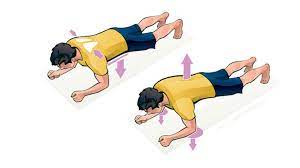
- Improves posture.
- Assume a push-up position with the arms stretched.
- Tense the muscles of the core and the buttocks to form a straight line with the body.
- Let the upper body sink down. Keep both arms stretched.
Clasping the Hands Backwards
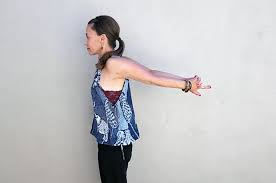
- Start with standing straight with a tightened torso.
- Take the hands behind the back and try to clasp them.
- Maintaining the position, and trying to extend the neck backward by looking up.
- Hold for 10 seconds.
- Relax and repeat.
Shoulder and Neck Lift:
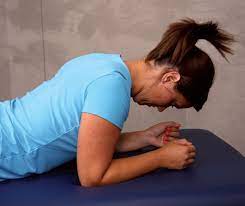
- Lie down flat on your stomach.
- Gently try to lift the shoulder and neck up as much as possible.
- Maintain in this position for 10 – 20 seconds.
- Resume to the original position of lying flat on the ground. Repeat this 5-10 times.
Upper Torso Stretch with a stick

- Take a long stick or rod.
- Stand straight with the feet hip-width apart.
- Hold the stick and let it rest on the shoulder behind the neck.
- Rotate the upper body from left to right as much as possible.
- Repeat on the opposite side.
Swiss BallThoracic extension:
- Sit in front of the stability ball
- Properly support the lower back around the ball.
- Clasp the hands behind the neck without pushing the head forward.
- Take a deep breath and sink onto the ball.
- Gently extend the upper part of the spine backward.
- Once you reach full extension, take a breath in and gently curl up to the starting position.
- Repeat 10-20 times gently and continuously.
Lying Rotation
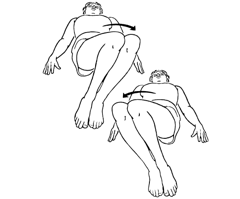
- Lie on the side of the floor and bend your knees to 90°.
- Put the arms out in front with the palms facing each other.
- Rotate the trunk and gently extend the arm, and head to look down the line of the arm.
- Return to the beginning position and relax.
- Repeat gently and continuously 5-6 times.
- Repeat on the opposite side.
Stretching
Doorway Pectoral Stretch
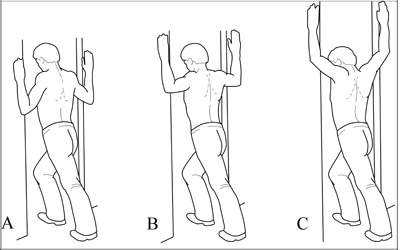
- Stand beside a door frame or corner of a wall.
- Keeping the back straight and the inner core engaged, bring the arm up against the wall with the elbow and shoulder bent at 90 degrees.
- With the arm placed on the wall, draw the other shoulder back followed by the torso in a straight line.
- Keep up the back straight and the core engaged.
- Hold this for 20-30 seconds and repeat three times on each side 3 times per day.
Camel Pose

- Kneel on the floor with knees hip-width apart and the hands on the waist.
- Tuck the toes or put them flat against the floor.
- Gently reach back and place one hand on each heel.
- Keep the chest lifted, shoulders back and down, engage the core and gently push the hips forward.
- Hold for 10-15 seconds and repeat 3 times.
Hands Behind the Back:
- Stand tall with the feet shoulder-width apart.
- Intertwining the fingers behind the back and straightening the arms.
- Keep the chest lifted and pull the shoulder blades downward.
- Hold for 10-15 seconds and repeat three times.
Floor Angels

- Start with lying flat on the back with feet hip-width apart and flat on the floor.
- Position both the arm to the side at a 90-degree angle with palms facing upwards.
- Keeping in contact with the floor at all times, gently bring the arms up over the head until they are fully extended.
- Then gently bring both arms back to the 90-degree initial position.
- Repeat 15 times for three sets.
- Remember to keep the back flat against the floor and ribs tucked at all times.
Pec Release
- Place a lacrosse or tennis ball between the pectoralis muscles and a doorway or the wall.
- Gently lean the body onto the ball for 10-20 seconds to release tension in the muscle.
- Move the ball to other points in the chest area and repeat the prior step.
Dos and Don’ts to prevent chest pain
- Do maintain proper posture to lessen the stress on the back
- Do not skip regular exercise as they may strengthen the muscles and ligaments
- Do sit on backbone-friendly chairs
- Do not avoid wearing protective equipment at the time during sports activities
- Do wear a seat belt when traveling
- Do not avoid proper lifting techniques when lifting heavy items.
FAQ
The most usual causes of pleuritic chest pain are bacterial or viral infections, pulmonary embolism, and pneumothorax. Other less usual causes involve rheumatoid arthritis, lupus, and cancer. Pneumonia or lung abscess. These lung infections may cause pleuritic and other types of chest pain, like a deep chest ache.
If you are having sudden, crushing chest pain or if the chest pain radiates into the jaw or the left arm. If the chest pain also causes shortness of breath, dizziness, nausea, or vomiting.
The pain of a heart attack varies from that of an inflamed chest muscle. A heart attack can cause dull pain or an uncomfortable feeling of pressure in the chest. generally, the pain starts in the center of the chest, and it can radiate outward to one or both arms, the back, neck, jaw, or stomach.
The symptoms of non-cardiac chest pain are chest pain that can be associated with difficulty swallowing, pain when swallowing, regurgitation of food, or a sensation of food getting stuck.
High blood pressure may damage the arteries by making them less elastic, which reduces the flow of blood and oxygen to the heart and leads to heart disease. Furthermore, reduced blood flow to the heart may cause: Chest pain, also called angina.

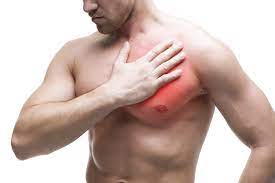
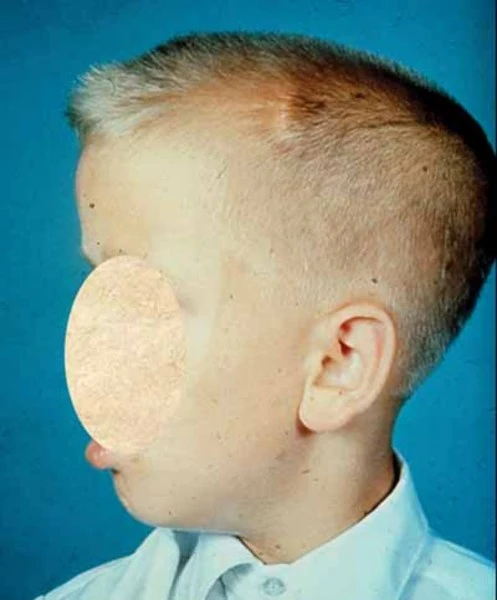
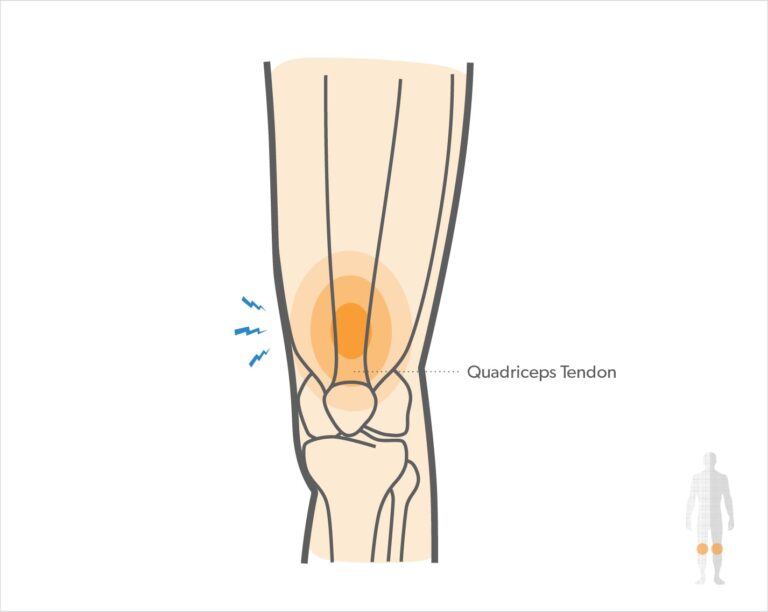
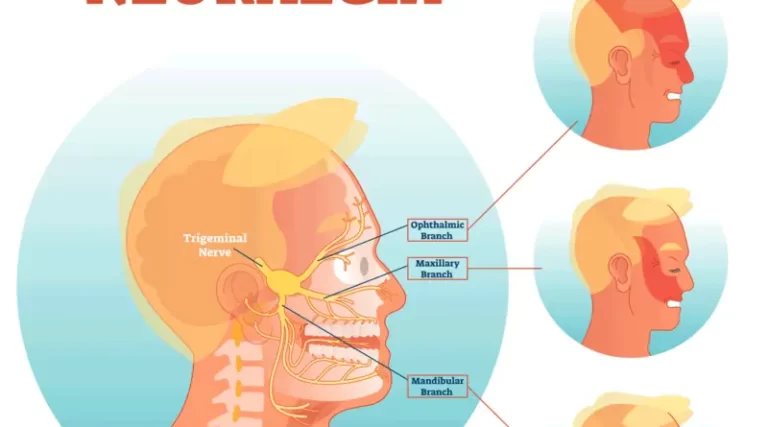
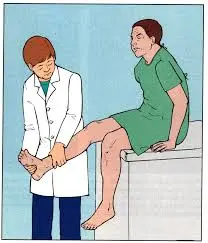
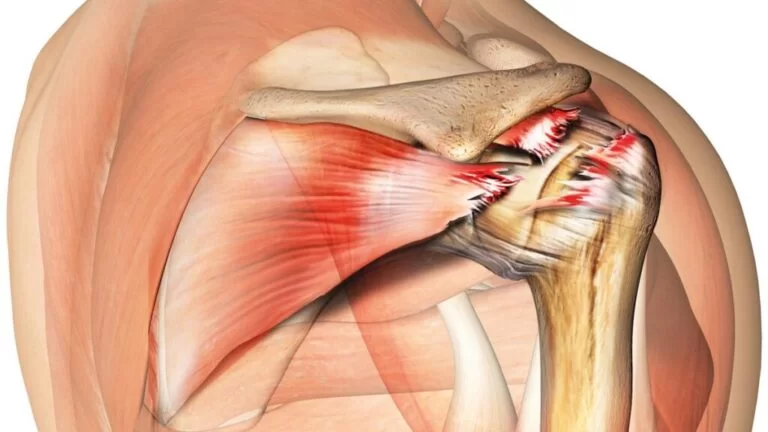
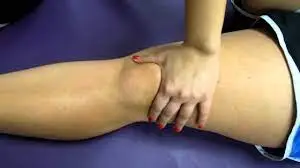
5 Comments